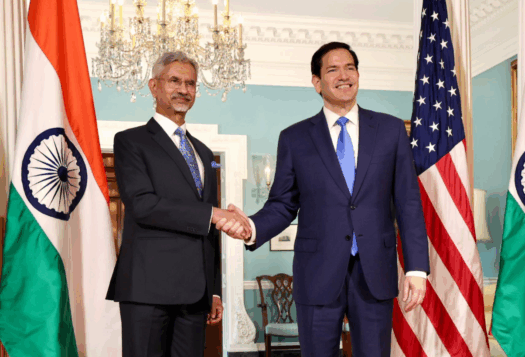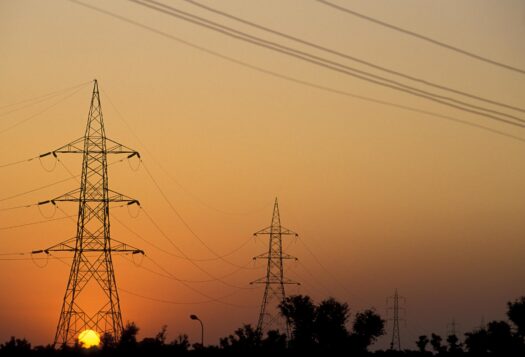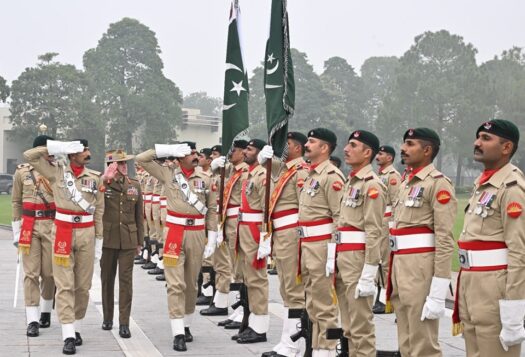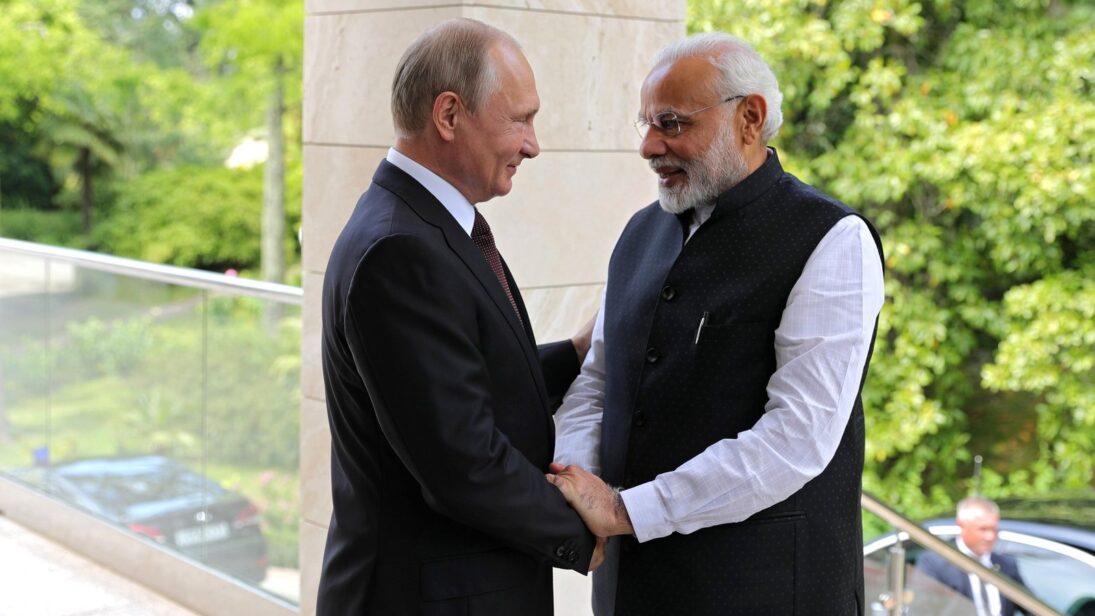
Russia’s decision to pursue military intervention in Ukraine has evoked severe criticism and anti-Russia sentiments from across the world and has resulted in Moscow’s global isolation. The West, led by the United States, has imposed crippling sanctions on Moscow and frozen Russia’s overseas assets, causing the Russian ruble to plummet to a record low and wreaking havoc on Russia’s economy. However, India has been noticeably absent from this global backlash, placing renewed scrutiny on New Delhi’s robust defense relationship with Moscow, best exemplified by its purchase of Russian S-400 air defense systems, underway since late last year.
India’s purchase of a Russian defense system will automatically trigger sanctions under the Countering America’s Adversaries Through Sanctions Act (CAATSA), unless President Biden authorizes a CAATSA waiver by presenting a case to Congress. The debate over India’s eligibility for a CAATSA waiver has been ongoing for years, and security analysts and U.S. congresspeople alike are divided on the issue, especially given India’s tacit support for Russia during the ongoing crisis.
While some policymakers, such as Senator Ted Cruz, continue to argue that the triggering of CAATSA on India would be “extraordinarily foolhardy” to the deepening bilateral relationship, the climate of distrust towards Russia may prevent Washington from coalescing around a CAATSA waiver. The U.S. must avoid the temptation of punishing New Delhi for its Russian defense deals. Failing to issue a waiver for CAATSA sanctions as a short-term reaction to the Ukraine crisis would prove detrimental to long term U.S. goals, dampening the India-U.S. relationship and slowing joint efforts to counter China’s rise.
Failing to issue a waiver for CAATSA sanctions as a short-term reaction to the Ukraine crisis would prove detrimental to long term U.S. goals, dampening the India-U.S. relationship and slowing joint efforts to counter China’s rise.
CAATSA and India’s Relationship with America
The United States has a history of imposing sanctions on India for the latter’s nuclear program, including the suspension of uranium shipments to India post Pokhran-I and the termination of foreign assistance and military sales post Pokhran-II. It was not until 2001 that President Bush repealed all nuclear related sanctions on India, and in the following years, the bilateral India-U.S. relationship dramatically improved. The 2008 123 Agreement allowed United States to recognize India as a de-facto nuclear weapons state and the commencement of bilateral 2+2 talks in 2018 ushered in an era of military-to-military cooperation.
Then came the warning from the Trump administration for states, including India, to forego defense deals relating to the purchase of the Russian S-400 air defense system. Turkey was made an exemplar, with the United States refusing to issue a CAATSA waiver to Ankara in 2020. CAATSA, since its inception in response to Russia’s annexation of Crimea in 2014 and intelligence reports of Russian interference in the 2016 U.S. Presidential elections, aims to “counter aggression” by imposing economic and financial liabilities on states that maintain significant trade relations with Iran, the Russian Federation, and North Korea, rather than hurting U.S. strategic partnerships. With the India-Russia S-400 defense once again under scrutiny amid the Ukraine crisis, the United States is in a difficult position. CAATSA sanctions on India will be triggered automatically upon Moscow’s delivery of the S-400 missile system to New Delhi, unless under Section 231, the President of the United States intervenes by submitting a written waiver or delays its imposition with appropriate consultation from the Congress.
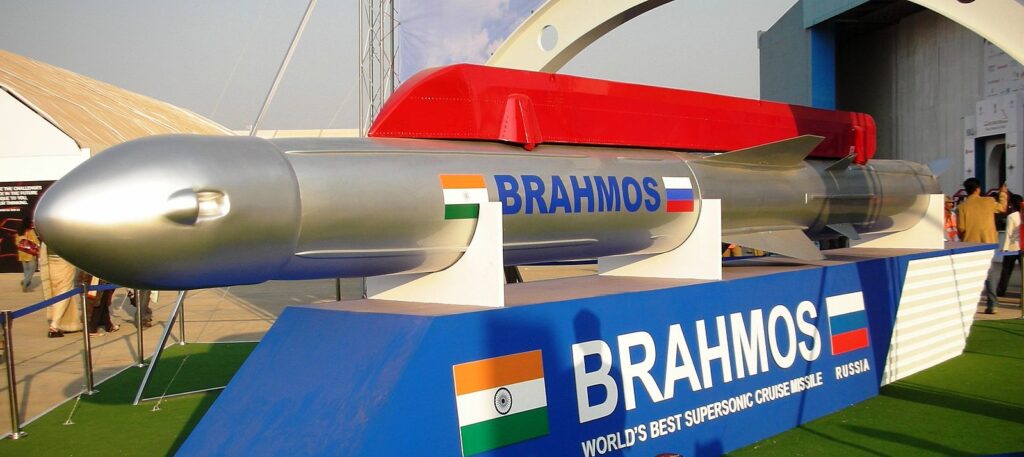
In the current context of the Ukraine crisis, the United States must recognize that the necessity of maintaining a strategic partner in the Indo-Pacific outweighs the need to discourage Russian arms purchases. While the anti-Russia climate could lead policymakers to pursue staunch sanctions on states that cooperate with Russia, failing to issue a CAATSA waiver in this instance would stall the progression of the India-US partnership. This relationship has become a cornerstone on U.S. strategy in the Indo-Pacific, acting as a deterrent to China. Sacrificing the India-U.S. partnership for a short-term reaction would be detrimental in the long-term.
By issuing India a CAATSA waiver, the Biden administration may have a greater ability to shape India’s policies through increasing alignment and military-to-military cooperation, compelling India to gradually reduce its reliance on Russian military equipment. This remains especially relevant as India was designated as a Major Defense Partner by the United States in 2016 and was upgraded to Strategic Trade Authorization tier 1 status in 2018, allowing New Delhi license-free imports for certain American dual-use technologies.
Conversely, if CAATSA sanctions are levied on India, it would make New Delhi reconsider its strategic relationship with the United States and potentially encourage deeper cooperation with Moscow, especially given the recent Indo-China border skirmishes along the Line of Actual Control which necessitate new military systems. From New Delhi’s perspective, CAATSA sanctions directly infringe on the core principles of India’s multi-alignment foreign policy. Logistically, India also remains heavily reliant on Russian military equipment and would have difficulty immediately ceasing ties with Moscow. In the bilateral 2+2 dialogue between Russia and India late last year in New Delhi, both sides restated their commitment to upgrade defense cooperation through the production and development of armed equipment and holding regular bilateral military drills. Pushing India too hard with CAATSA sanctions is unlikely to change the reality of India’s ties to Russia.
Conversely, if CAATSA sanctions are levied on India, it would make New Delhi reconsider its strategic relationship with the United States and potentially encourage deeper cooperation with Moscow
Russia, CAATSA, and its Domestic Implications on India
Potential CAATSA sanctions against India threaten a pillar of New Delhi’s foreign policy that emerged from India’s colonial struggle against British rule. In the short term, CAATSA sanctions could push India closer to Moscow in light of the ongoing conflict between Russia and Ukraine, while in the long term could exacerbate India’s historical problem of trusting Western alliances. The relationship between Moscow and New Delhi, formed during India’s policy of non-alignment with either camp during the Cold War, has remained consistent for decades since the 1971 signing of the Treaty of Peace, Friendship and Cooperation. Therefore, it is not surprising that even after Russia’s annexation of Crimea in 2014, almost half the surveyed Indian populous held a favorable perception of Putin in 2019.
Post the forging of the 123 Agreement between India and the United States in 2005, the notion of India’s global ambitions being chained down by the West resulted in a fierce domestic debate in the Indian Parliament as to whether India had yielded too much of its strategic autonomy to the United States. If CAATSA sanctions were to be imposed, it would likely spark a renewed public debate in India about the strategic value of the Indo-US partnership. This could culminate in domestic political pressure forcing India to make a difficult decision between its historical and ideological policy of non-alignment and a foreign policy based on a stronger defense relationship with Washington that would be primarily focused on deterring China.
Rather than using sanctions to pressure New Delhi to reduce its ties with Moscow, the United States should present itself as a more attractive defense partner and increase its investments in India’s military modernization. If Washington pursues a more gradual approach, India will continue to slowly reduce its military dependency on Russia. This trend has already begun, including India procuring Rafale jets from France and importing Tavor X95 rifles from Israel as compared to Russian made Sukhoi SU-30MKI fighter jets and AK-47 assault rifles. Overall, the share of Russian arms imports to India fell from 70 percent to 49 percent between 2011-15 and 2016-2020 and India’s military imports from France and Israel saw an increase of 709 percent and 82 percent respectively. Reports also recently emerged amidst the Ukraine crisis that India had cancelled military deals with Moscow pertaining to MiG-29s, SU-30 fighter jets, KA-226T utility helicopters, and anti-tank weapons—although reportedly no formal decision on this has been made yet. It is no surprise that New Delhi is actively looking for renewed defense partnership, recognizing the challenges of relying heavily on Moscow. Amid the ongoing Ukraine crisis, defense deals with Russia would attract scathing criticism from the international community that New Delhi prides itself as being part of, while the financial and political execution of ongoing and future deals with Moscow is also uncertain given Russia’s faltering economy and global isolation.
It is important that New Delhi is given its own time to gradually move away from Russian defense cooperation, rather than being compelled to do so through CAATSA sanctions. In recent years, India has diversified and ramped up arms imports from Brazil, France, Israel, South Africa, South Africa, and the United States. Also, with Russia constantly being pushed to economic and global isolation amidst the Ukraine crisis, irrespective of whether CAATSA sanctions are implemented on India, it will force New Delhi to invest more in seeking alternate partners and complicate executing its bilateral defense agreements with Moscow.
New Delhi understands it is in a unique position and must maintain important bilateral ties with both nations amidst the Ukraine crisis, avoiding direct condemnation of ongoing Russian actions in Ukraine and cooperating to rescue Indian nationals stuck in the conflict zone. As India recently abstained from voting twice against Russian actions on the floor of the United Nations General Assembly and the United Nations Security Council, New Delhi has already demonstrated how much it values its relationship with Russia. A gradual deepening of the U.S.-India relationship can happen in spite of the current climate, but only with perseverance from the United States and recognition that if pushed too hard, India will double-down on its historical relationships.
***
Image 1: Presidential Press and Information Office via Wikimedia Commons
Image 2: Anurag Singla via Wikimedia Commons
